Advertisements
Advertisements
प्रश्न
Suppose you have three concave mirrors A, B and C of focal lengths 10 cm, 15 cm and 20 cm. For each concave mirror you perform the experiment of image formation for three values of object distance of 10 cm, 20 cm and 30 cm. Giving reason answer the following:
(a) For the three object distances, identify the mirror/mirrors which will form an image of magnification – 1.
(b) Out of the three mirrors identify the mirror which would be preferred to be used for shaving purposes/makeup.
(c) For the mirror B draw ray diagram for image formation for object distances 10 cm and 20 cm.
उत्तर
(a) In case of concave mirror, a real and inverted image of same size is formed as that of object, when object is placed at a distance of 2F (R). Hence, in case of mirror A when object is placed at 20 cm , and in case of mirror B, when object is placed at 30 cm, the image formed will be of same size as that of object. Thus, magnification in both these cases will be −1.
(b) The mirror C, with focal length of 20 cm will be preferred to be used for shaving purposes/makeup. As within this focal length, enlarged and erect image will be formed.
(c)
(i) When the object is at 10 cm from the mirror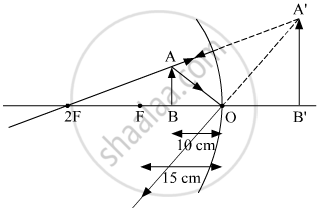
(ii) When the object is at 20 cm from the mirror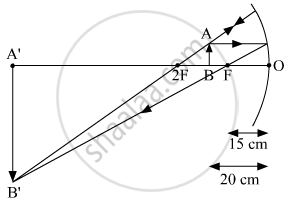
APPEARS IN
संबंधित प्रश्न
Draw a ray diagram for concave mirror when the object is between centre of curvature and focus.
Draw ray diagrams to show the principal focus of a concave mirror.
The focal length of a small concave mirror is 2.5 cm. In order to use this concave mirror as a dentist's mirror, the distance of tooth from the mirror should be:
(a) 2.5 cm
(b) 1.5 cm
(c) 4.5 cm
(d) 3.5 cm
An object is 100 mm in front of a concave mirror which produces an upright (erect image). The radius of curvature of the mirror is ______.
At what distance from a concave mirror focal length 10 cm should an object 2 cm long be placed in order to get an erect image 6 cm tall?
How far should an object be placed from the pole of a converging mirror of focal length 20cm to form a real image of the size exactly `1/4`th the size of the object?
The mirror used by a dentist to examine the teeth of a person is:
(d) any one of the above
(a) convex
(b) concave
(c) plane
(d) any one of the above
The mirror used by the ophthalmologist to examine the eye is _______.
State whether true or false. If false, correct the statement.
When an object is at the centre of curvature of concave mirror the image formed will be virtual and erect.
Which of the following ray diagrams is correct for the ray of light incident on a concave mirror as shown in figure?

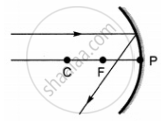 |
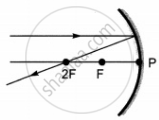 |
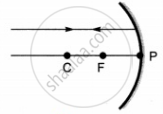 |
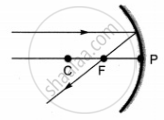 |
| A | B | C | D |
